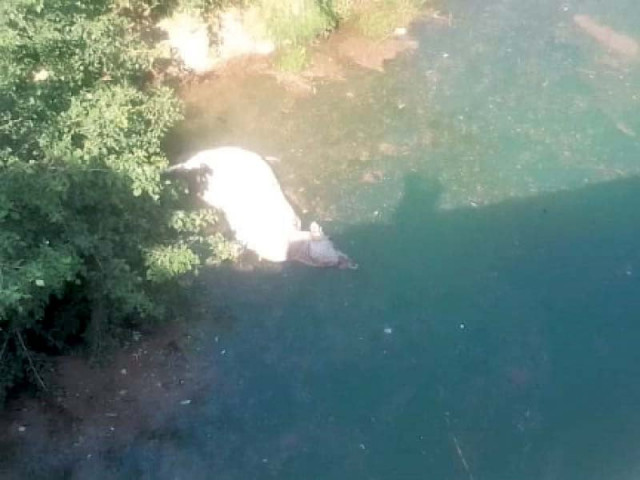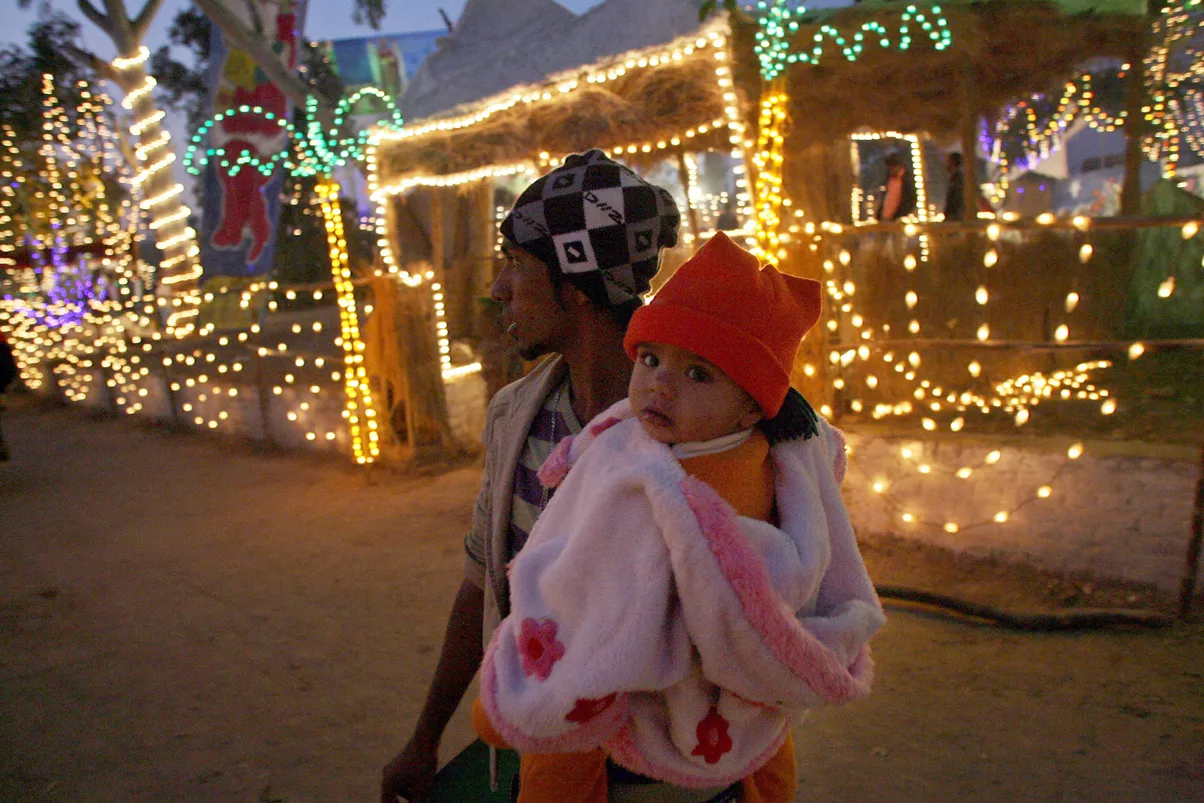Khanpur Dam faces looming crisis of contamination
Different pollutants, dead animals being dumped into reservoir that supplies water to twin cities

The water of Khanpur Dam is being contaminated by various kinds of pollutants that are being discharged into the reservoir meant for providing clean drinking water to the residents of Rawalpindi and Islamabad.
The Khanpur Dam, a multi-purpose project aimed at supplying water for irrigation as well as for household use, is located in the Haripur district, about 40 kilometres from the federal capital. It is situated at the foothills of captivating green mountains.
Fundamentally, the reservoir, made operational in 1983 after its construction at a cost of over Rs1 billion and being looked after by the Water and Power Development Authority (WAPDA), was built to provide safe drinking water to the residents of Rawalpindi and Islamabad. However, over time it started attracting visitors from across the country and abroad for boating, parasailing and other water sports. This also led to the creation of jobs for locals and dozens of hotels and restaurants were built nearby for the convenience of tourists.
The popping of hotels and restaurants and farm residencies is gradually taking a toll on the reservoir’s water as a majority of setups and farm residences built around the dam are dumping sewage and dead animals into the dam. This is not only contaminating the water for aquatic life but also for human consumption.
Constructions without a proper sewerage system in the catchment areas of the water reservoir were the major source of water contamination. Unabated construction upstream of the dam is a continuous source of water pollution, which may have far-reaching health impacts on the end-users.
Haripur Deputy Commissioner Fawad Khan told The Express Tribune that he has issued strict orders to the tehsil administration to clean the dam on a priority basis. “Arrangements will be made for the disposal of dead animals and legal action will be taken against hotels and restaurants dumping sewage into the dam,” he claimed.
WAPDA EXEN Shoaib said that there have been reports of animals infected with lumpy skin disease being thrown into the dam but “the dam administration lacks sufficient manpower and security to secure the premises. He said that the situation will be investigated and that the water would be protected against contamination.
Family physician and health expert Dr Asad Ali while talking to The Express Tribune said that if dead animals or sewage is discharged into the water, it not only becomes harmful to the aquatic life but also leads to the spread of infections such as cholera, typhoid, hepatitis, kidney and lung diseases.
Faisal Awan, a local resident, told The Express Tribune that he contacted the tehsil municipal administration and reported the dumping of dead animals infected with LSD in the Khanpur Dam but they refused to tend to his complaints stating that they were not responsible for cleaning the dam.
Owais Riaz, a tourist, who was visiting the dam, said that he had come to Pakistan from the UK with his daughter for the first time. He said that Khanpur Dam was an enjoyable place, however, his daughter inquired about the garbage dumped in the surrounding areas. He said that he was speechless and could not give an answer to his daughter.
Dr Easter Park, a PhD scholar from South Korea, said that Bhamala Stupa near the dam is a very sacred place in his religion. Therefore, he said the government should protect the dam water from getting polluted and take immediate steps to maintain the beauty of the dam so that apart from other tourism activities, religious tourism could also be promoted there.
The world heritage-listed Bhamala Stupa is located on the dam's backside and is known as a revered Buddhist place of devotion where a 40-foot-long Buddha figure was uncovered during excavation. Religious travellers from all around the world visit Bhamala Stupa.
According to Khyber-Pakhtunkhwa's Department of Archaeology Director Dr Abdul Samad, a huge sum was being spent on the decoration of the stupa where all kinds of tourist facilities will be provided.
Sources said that the local population living on the back side of the dam is throwing garbage and sewage into the dam. Recently, dead animals infected with lumpy skin disease were dumped into the dam, causing contamination of the reservoir water.
The Khanpur Dam's area is mostly made up of rugged and hilly rocks. The dam's height is 167 feet, and its length is 1,560 feet. The dam has a storage capacity of 107,000 acre-feet, and the current water level is 91,500 acre-feet.
Similarly, rain and glacial water from Murree, Galiyat and other upstreams also flow into the dam. The Left Bank Canal is 18 km long and has a water supply capacity of 440 cusecs, which not only meets the water requirements of agricultural areas but also provides water to the municipality, whereas the Right Bank Canal is 11 km long and has a capacity of 110 cusecs.
This canal irrigates the lands of Panj Khatta. This water is used to irrigate gardens, yielding the best malta, lychee and loquat crops.
Published in The Express Tribune, September 16th, 2022.

















COMMENTS
Comments are moderated and generally will be posted if they are on-topic and not abusive.
For more information, please see our Comments FAQ